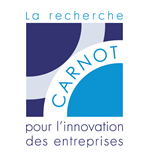Carnot PolyNat

PolyNat aims to create new biosourced, efficient, and innovative functional materials and systems. Our researchers draw on physicochemistry, green materials and life sciences, as well as biotechnologies to design nanostructured materials and biosourced devices with high added value using directed self-assembly and more eco-efficient processes. Thus, PolyNat responds to the European ambition to build a sustainable bioeconomy.
Key figures
Fermer
Key figures
| Permanent staff (full-time equivalent) | 281 |
| PhD Students | 113 |
| Global budget | 28,4 M€ |
| Partnership incomes with industry | 12,3 M€ |
Contact
Fermer
Contact
PolyNat Carnot Institute
Cermav-CNRS, BP 53
38041 Grenoble Cedex 9
France
Redouane BORSALI
Director
+33 (0)6 63 71 72 57
Communication:
+33 (0)4 76 03 76 32
borsali[a]cermav.cnrs.fr Email contact
contact[a]polynat.eu
Parent institutions

